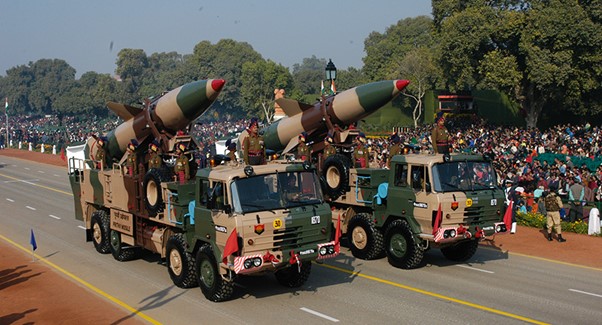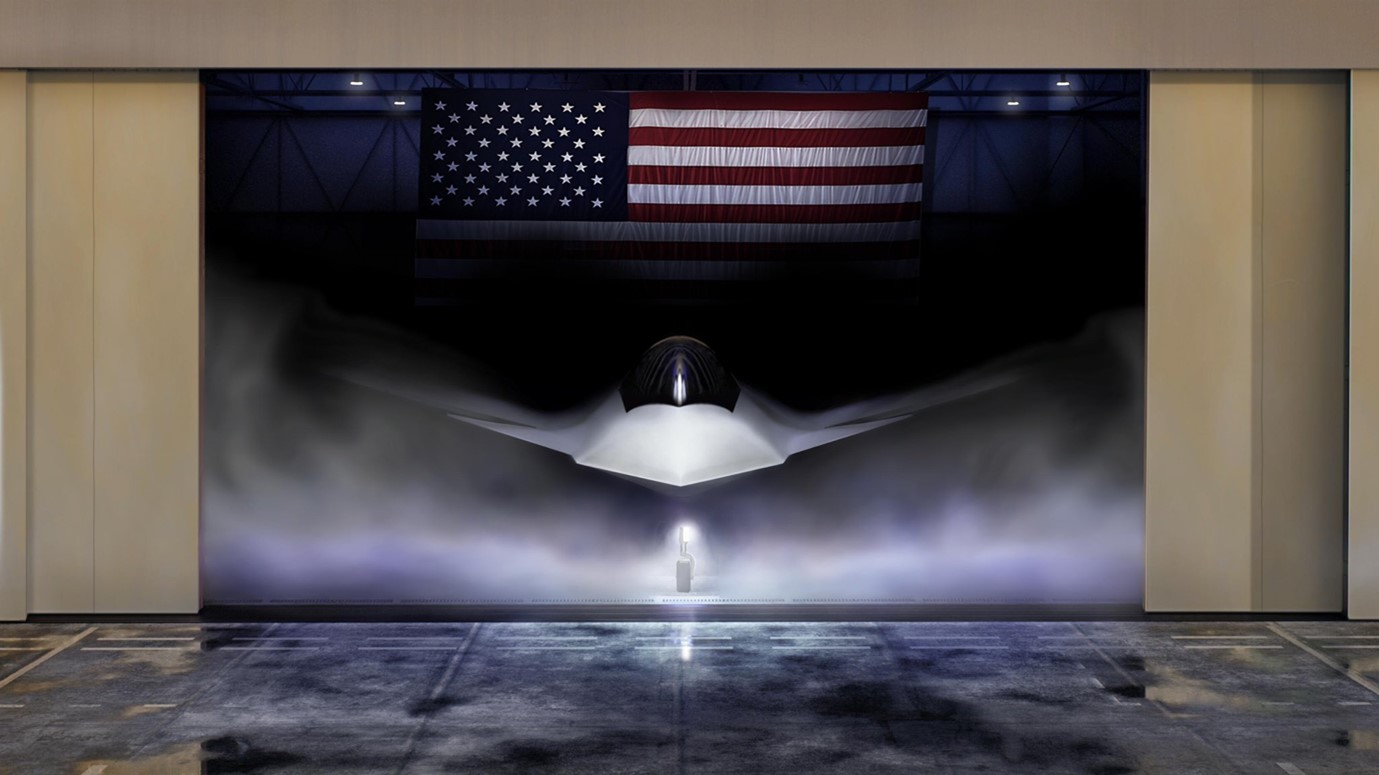
Conceptualizing A Conventional Missile Force

Nuclear Deterrent Dynamics
“The sole purpose of India’s nuclear deterrence is to deter adversaries use or threat of use of nuclear weapons”
Dr Manpreet Sethi
Indian nuclear deterrence that took shape post the Pokhran blasts in 1998 has matured and delivered its stated aims in 25 years of its existence. Nuclear blackmail of any kind has been prevented. Concurrently efforts to use nuclear umbrella to foment terror in India by Pakistan has effectively been neutralized by exploiting space for conventional operations under the umbrella of nuclear weapons. The nuclear doctrine has stood the test time and is regularly reviewed. Russia-Ukraine war has reinforced the reality of space for protracted conventional war in a nuclear weapons environment.
India’s security calculation with respect to Chinese conventional threat is under a dynamic review. The continued stalemate at the LAC and rapid upgrade in military capacities by China have driven India to enhance its border infrastructure and military capabilities for northern frontiers. In the nuclear domain, India has consistently kept the nuclear arsenal pegged at numbers considered adequate for ‘credible minimum deterrence’. China has in recent years started rapid upgrade in its nuclear stockpiles in a sort of arms race for credible Nuclear Force to face US. The impact of the improved arsenal on India’s credible minimum deterrence requirement calculations is open to a debate. The Indian capabilities are being regularly upgraded to have a potent triad under the Strategic Forces Command, the lead agency to hold and use nuclear forces when the political leadership calls for it.
Conventional Missiles Dynamics
Air Land Battle concept took a back seat in Ukraine, the effective fight back by the weaker Ukraine army is likely to once again make the planners of next offensive of this scale use pre-emptive strikes to degrade the military power of the adversary. With every passing day of the war, the success of Air Defence against manned platforms has made both sides look for other options; missiles and unmanned drones are two key platforms seeing increased use. Within missiles, cruise and hypersonic technologies are the force multipliers with capacities to defeat the most modern air defence systems. Russia has effectively used hypersonic missiles in Ukraine[i] for which seemingly Ukraine does not have a counter.
The recent attacks on Khlemintsky ammunition dump in Ukraine has attracted attention in use of stand-off weapons to target logistics sustenance of the adversary. The war fighting basics of World War era seemingly are back in play. In all this conventional tipped missiles are an important player.
The use of conventional missiles in conventional warfare has matured to a level that it is part of the escalation matrix and achieving a deterrence role in warfighting. In Ukraine the use of missiles by both sides is on the increase despite the high costs. The UK has confirmed it is supplying Ukraine with long-range missiles it requested for its fight against invading Russian forces. The Storm Shadow cruise missile has a range of over 250km (155 miles), reported the[ii]”BBC on 12 May 23. Ukraine is seeking more with the promise that it will not use the missiles on Russian mainland. Even if and after more Western powers decide to support the Ukraine with missiles in this category the supply lines will be tested based on holdings and the manufacturing capacities[iii], highlighting the need to plan and equip to required scales in peace time to cater for worst case scenarios.
The Chinese Doctrine
“In 2021, the PLARF launched approximately 135 ballistic missiles for testing and training. This was more than the rest of the world combined excluding ballistic missile employment in war zones. A flurry of such tests, the ownership of around 2500 ballistic missiles and 700 launchers, and preparation to increase nuclear warheads from 350 to 1500 by 2035 demonstrate China’s resolve to keep improving capabilities and capacities.[iv]” Cdr Sandeep Dhawan (retd)
China has the largest land-based missile arsenal[v] in the world. These missiles are very accurate and can have devastating effects even with conventional warheads. The total inventory including cruise missiles is close to 4,000.
The Chinese have long maintained a separate force for its missiles initially called The Second Rocket Arty, which was rechristened as the PLA Rocket Force in 2016. Post Gulf-War, seeing the effectiveness of US in destroying Iraqi military capabilities in pre-emptive strikes, China decided to upgrade the force which holds all its ballistic and cruise[vi] missiles, less the SLBMs. As per US reports, China has the largest land based missile arsenal which can be used for a pre-emptive strike. These missiles have high accuracy and modern warheads to cause sufficient damage even without use of a nuclear warhead. The current equipping would probably be focussed to build capacities needed in a contingency of a conflict with US but would equally be a threat in case of a Sino-Indian conflict.
“The go-to tactical textbook of senior People’s Liberation Army (PLA) commanders is ‘Science of Military Strategy’. The textbook explains conventional missile assault or “first strike” tactics for containment, deterrence, and control. First strike tactics are utilized for saturation attacks by employing extraordinary missiles attack against enemy surface targets. These targets include airports, naval ports, and ground forces deployments. The main objective is to destroy the enemy’s defence systems and disrupt their counter-attack abilities[vii].” This is distinctly applicable in the segmented sectors on Indian northern borders all of whom have tenuous lines of operations and logistics.
The worst case scenarios of use of the Rocket Force against India needs to be war-gamed in order to work on Indian counter measures of the same. This would include debate on Indian doctrine for use of conventional missiles in defensive and offensive roles.
The Nuclear and Conventional Missile Arsenal Separation
Indian security establishment has started looking beyond the ‘purely conventional’ BrahMos to expand the conventional missile arsenal. Should India mix holding of the nuclear and conventional missile assets? How will that impact escalation control versus strategic ambiguity that China achieves by choosing to mix the two. Accordingly, the new assets would come under Strategic Forces Command or under a separate but similar Conventional Missile Forces Command.
So far India has maintained a clear distinction wherein ballistic missiles were reserved for nuclear warheads and the cruise for conventional roles. However, with the need for higher numbers, the cost dynamics make it prudent to look for ballistic missiles with improved accuracy and warheads for conventional arsenal. Pralay, Nirbhay, Prahar BM 04 and Agni series with conventional warheads are the missiles that can be considered for induction.
Indian Doctrinal Considerations
A missile system is costly in R&D and thereafter making it an operational system costs a few thousand crores rupees for a Regiment, and hence it is important that Indian effort to increase conventional missile holdings has doctrinal clarity for employment of such weapons. This section discusses issues that need to be considered to build a conventional missile force doctrine and force structure.
“In a modern war, rear facilities such as command and control posts, logistics hubs, airfields, and communication nodes will take the first salvo from precision standoff weapons.”
Gen MM Naravane, former COAS
The lessons from recent wars indicate that missiles will increasingly be used in areas with thick air defence, where manned aircrafts vulnerability is high. The Indian mitigation strategy will be to invest in counter missile technology and concurrently build own offensive capability. For the offensive capability India needs a Conventional Missile Force which can strike targets to include:-
- Air Defence assets.
- Assets of the rival Air Force.
- Naval assets – Chinese has focussed on anti-ship missiles to counter US naval domination, similarly ports are likely targets.
- Land force concentrations.
- Missile assets.
- Command and control centres.
- Logistics hubs including ammunition and fuel dumps and communication assets that aid forward replenishment eg rail networks, ports, airports.
- Civil infrastructure that aid war-fighting capabilities and capacities.
- Targets to deter attacks on own civil assets.
The doctrinal template for the missile force would need to consider the objectives, employment philosophy and desired structure of the missile force. Some considerations/questions to build the doctrinal template of the missile force are enumerated below:
- Technology is a key component that will dictate the variety of missiles and war heads that need to be part of the arsenal. What is the roadmap in missile and warhead technology of the nation? DRDO should provide these inputs based on a scientific analysis.
- What is required to have a credible ‘threat in being’ to achieve deterrence against use of unmanned systems by the adversary? What is the desired force profile of the missile force with a 15 and 25 years perspective. Decision on the types and numbers of various missile systems to be in the arsenal. This are important decisions as the entire effort is cost and time intensive.
- Tri-service employment philosophy for conventional missiles.
- Employment in various stages of offensive operations.
- Employment in various stages of defensive operations.
- Organisational structure and processes for operational employment. Force structuring and processes for employment. (In an era where joint warfighting abilities are being built, it seems prudent that the missile assets may be best handled by a tri-service organisation).
- Decision on missiles that need to remain with the three services for tactical battles (maybe based on a range limitation, say 100km) and balance with the Central Missile Force.
- Decision on inclusion/exclusion of the long range rocket systems that form part of field artillery arsenal. There is a need to differentiate between tactical, operational and strategic weapons systems. Tactical and operational level battles are best handled at field army and should ideally be kept out of purview of the Conventional Missile Force at national level, hence rockets may best be suited to continue with Field Army or Theatre Commands.
- Force mix of static and mobile missile systems; the concept and plan to ensure survivability from a pre-emptive strike. This would involve discussion on locations and design of the missile bases. All such projects would need a turn-key implementation along with the weapon system.
The Conventional Missile Force would need the following:
- A credible force with variety of ranges, warheads and missile technologies.
- Target selection and engagement decision making body, which can function in synergy with the three services. The structure must ensure prioritisation based on needs of all three services as per progress of battle.
- Robust command and control structure which can withstand enemy efforts at pre-emptive strikes.
- Target surveillance and Post Strike Damage Assessment (PSDA) capability based on the targeting philosophy.
Conclusion
Need of a Conventional Missile Force for India is an accepted fact. There is need for a debate within the strategic community to provide framework for the security planners for operationalising such a force. It is a cost and technology intensive effort that can prove crucial in any future conflict and hence needs robust planning.
*******************************************************************************************************************************
The views expressed and suggestions made in the article are solely of the author in personal capacity and do not have any official endorsement. Attributability of contents lies purely with the author.
********************************************************************************************************************************
Reference:
[i] https://www.aljazeera.com/news/2023/3/10/what-are-the-hypersonic-missiles-russia-is-using-in-ukraine
[ii] Gregory, James BBC https://www.bbc.com/news/world-europe-65558070
[iii] https://twitter.com/FRHoffmann1/status/1657677201985159169?s=20
[iv] https://chanakyaforum.com/threat-of-chinese-rocket-force-and-the-indian-options/
[v] https://www.firstpost.com/opinion/dedicated-rocket-forces-options-and-challenges-for-india-12623792.html
[vi] https://nationalinterest.org/blog/the-buzz/missile-strikes-us-bases-asia-chinas-real-threat-america-21714
[vii] https://chanakyaforum.com/threat-of-chinese-rocket-force-and-the-indian-options/
Disclaimer
The opinions expressed in this article are the author’s own and do not reflect the views of Chanakya Forum. All information provided in this article including timeliness, completeness, accuracy, suitability or validity of information referenced therein, is the sole responsibility of the author. www.chanakyaforum.com does not assume any responsibility for the same.
Chanakya Forum is now on . Click here to join our channel (@ChanakyaForum) and stay updated with the latest headlines and articles.
Important
We work round the clock to bring you the finest articles and updates from around the world. There is a team that works tirelessly to ensure that you have a seamless reading experience. But all this costs money. Please support us so that we keep doing what we do best. Happy Reading
Support Us















POST COMMENTS (0)